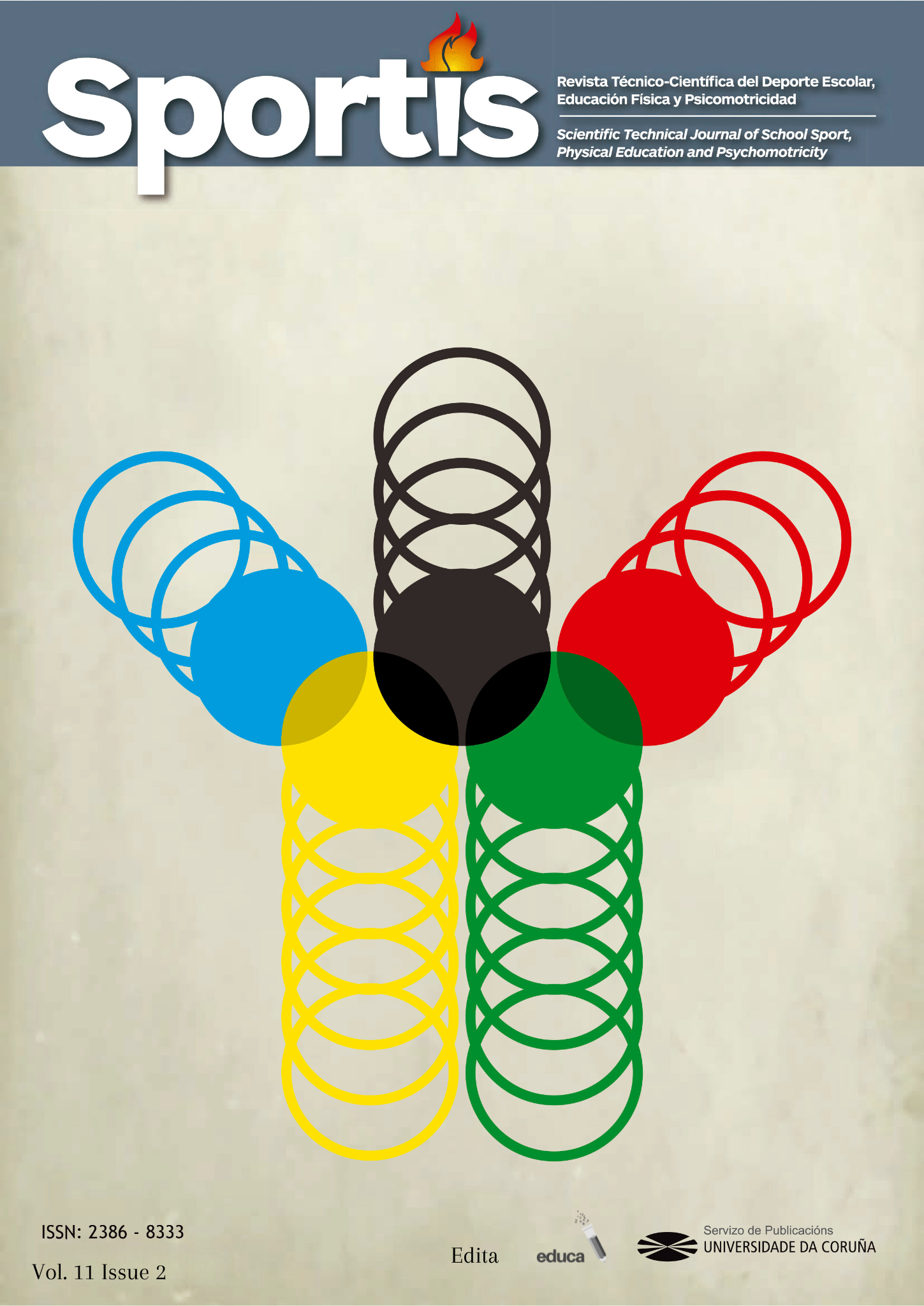Influence of movement on the learning of chilean childhood: a systematic review
Main Article Content
Abstract
Movement is something innate in the animal world, and in humans, it is a form of expression, locomotion, and communication. Therefore, in one way or another, it is present at all times, including teaching-learning processes. The main objective of the research is to evaluate the existing evidence on the influence of movement on the learning of boys and girls in the Chilean nursery stage (0 to 6 years). For this, a search was carried out in the Web of Science, Scopus, and Google Scholar databases, using keywords: movement, learning, and early childhood education, considering only empirical studies and other inclusion and exclusion criteria. The results show a relationship between learning and movement, recognizing that it is more significant when integrating movement into the classroom in a comprehensive manner. This approach improves behaviors within the classroom and enhances the effectiveness of using technology in teaching movements. It is concluded that movement is a key element in the construction of learning. However, the limited number of documents regarding this subject in early childhood or preschool education is evident
Keywords:
Downloads
Article Details
References
Andrade, A. (2020). El juego y su importancia cultural en el aprendizaje de los niños en educación inicial. Journal of Science and Research: Revista Ciencia e Investigación, 5(2), 132-149. https://doi.org/10.5281/zenodo.3820949
Araya, E. (2017). Orientaciones teóricas y técnicas para el manejo de sala de psicomotricidad. https://basica.mineduc.cl/wp-content/uploads/sites/25/2018/03/Psicomotricidad-WEB.pdf
Bidet-Ildei, C., Vilain, C., Fevin, S., Francisco, V., y Vibert, N. (2021). The role of finger kinematics in the acquisition of number meaning in kindergarten: a pilot study. Frontiers in Education, 8. 01-07. https://doi.org/10.3389/feduc.2023.1252731
Camargos, E. y Maciel, R. (2016). La importancia de la psicomotricidad en la educación de los niños. Revista científica multidisciplinaria base de conocimiento. (9), 254-275. https://www.nucleodoconhecimento.com.br/educacion-es/psicomotor-en-la-educacion-y-el-nino
Capio, C., Lee, K., Jones, R, Masters, R. (2021). Examining the Antecedent Role of Movement Proficiency in Child Development: Study Protocol. Frontiers in psychology, 12, 678874. https://doi.org/10.3389/fpsyg.2021.678874
Ciapponi, A. (2021). La declaración PRISMA 2020: una guía actualizada para reportar revisiones sistemáticas. Evidencia, Actualizacion En La práctica Ambulatoria, 24(3), e002139. https://doi.org/10.51987/evidencia.v24i4.6960
Cortázar, A., y Vielma, C. (2017). Chilean early childhood education: gender and years of attendance effects. Calidad en la educación, (47), 19-42. https://dx.doi.org/10.4067/S0718-45652017000200019
Ferreyra, E. (2011). Henri Wallon: Análisis y conclusiones de su método dialéctico. https://scholar.google.es/scholar?hl=es&as_sdt=0%2C5&q=Henri+Wallon+analisis+y+conclusiones+de+su+metodo+dialectico&oq=Henri+Wallon+analisis+y+conclusiones+de+su+metodo+dial
Fortich-Mesa, N. (2013). ¿Revisión sistemática o revisión narrativa? Ciencia y salud virtual, 5(1), 1-4. https://doi.org/10.22519/21455333.372
García, D., Chávez, M., Cruz, C., Guedea, J., Velázquez, G. y Zubiaur, M. (2018). Impacto de un programa de actividad motriz con funciones ejecutivas para el fortalecimiento del desarrollo integral del niño. Sportis. Revista Técnico-Científica del Deporte Escolar, Educación Física y Psicomotricidad, IV(1), 37-58. https://doi.org/10.17979/sportis.2018.4.1.2060
Hudson, K., Ballou, H., y Willoughby. M. (2020). Informe breve: Mejorar las habilidades motoras en la primera infancia tiene beneficios para la función ejecutiva y las habilidades numéricas. Developmental Science 24(4), 1-10. https://doi.org/10.1111/desc.13071
Jarraya, S., Wagner, M., Jarraya, M., y Engel, F.A. (2019). 12 Weeks of Kindergarten-Based Yoga Practice Increases Visual Attention, Visual-Motor Precision and Decreases Behavior of Inattention and Hyperactivity in 5-Year-Old Children. Frontiers in Psychology, 10, 1-11.https://doi.org/10.3389/fpsyg.2019.00796
Jia, N., Zhang, X., Wang, X., Dong, X., Zhou, Y., y Ding, M. (2021). The Effects of Diverse Exercise on Cognition and Mental Health of Children Aged 5-6 Years: A Controlled Trial. Frontiers in Psycology, 12, 01-09. https://doi.org/10.3389/fpsyg.2021.759351
Lalama, A. y Calle, M. (2019). Psicomotricidad: construyendo aprendizajes a través del movimiento. Sathiti: sembrador, 14(2), 211-218. https://doi.org/10.32645/13906925.899
Mena, C., Flores Lueg, C., Arteaga González, P., Saldaña Espinoza, D. y Navarrete Troncoso, E. (2021). Juego en primera infancia: aproximación al significado otorgado por educadoras de párvulos. Cuadernos de Investigación Educativa, 12(1). https://doi.org/10.18861/cied.2021.12.1.3063
Mohammad, M., y Reda, H. (2023). The influence of using video media on basic movement skills in kindergarten. Education and Information Technologies, 28, 9635-9658. https://doi.org/10.1007/s10639-022-11511-9
Sanchez-Serrano, S., Pedraza-Navarro, I., y Donoso-Gonzáles M. (2022). ¿Cómo hacer una revisión sistemática siguiendo el protocolo PRISMA? Usos y estrategias fundamentales para su aplicación en el ámbito educativo a través de un caso práctico. Bordón Revista de Pedagogía, 74(3), 50-66. https://doi.org/10.13042/Bordon.2022.95090
Pastor-Vicedo, J., Martínez-Martínez, J., Jaén Tévar, Y., y Prieto-Ayuso, A. (2019). Los descansos activos y la mejora de los aprendizajes en educación infantil: una propuesta de intervención. Revista Euroamericana de Ciencias del Deporte, 8(2), 67-72. https://doi.org/10.6018/sportk.401131
Portillo, M. (2020). Aprendemos desde el movimiento. Educación, 26(1), 59–62. https://doi.org/10.33539/educacion.2020.v26n1.2185
Pérez, C. (2012). Las revisiones sistemáticas: declaración PRISMA. Rev Esp Nutr Comunitaria, 18(1), 57-58.
Sugrañes, E., Colomé, J., Àngel, M. À., Andrés, M. N., Martí, M. T., Pinell, M., y Yuste, R. (2007). La educación psicomotriz (3-8 años): Cuerpo, movimiento, percepción, afectividad: una propuesta teórico-práctica. Graó.
Autor, N., Flores, M., Rojas, J., Saavedra, M., Domínguez, J. y Espinoza, F. (2021). La psicomotricidad educativa-preventiva como nuevo planteamiento en el quehacer pedagógico de los profesionales de la educación parvularia de Chile. Revista Infancia, Educación y Aprendizaje, 7(1), 68-86. https://doi.org/10.22370/ieya.2021.7.1.1747
Vujičić, L, Peić, M., y Petrić, V. (2020). Representation of movement-based integrated learning in different physical environments of an early education institution. Journal of Elementary Education 13(4), 453 - 473. https://doi.org/10.18690/rei.13.4.453-474.2020







